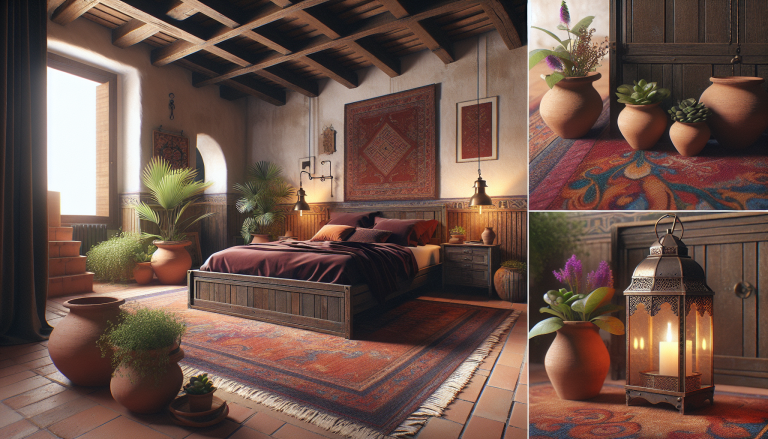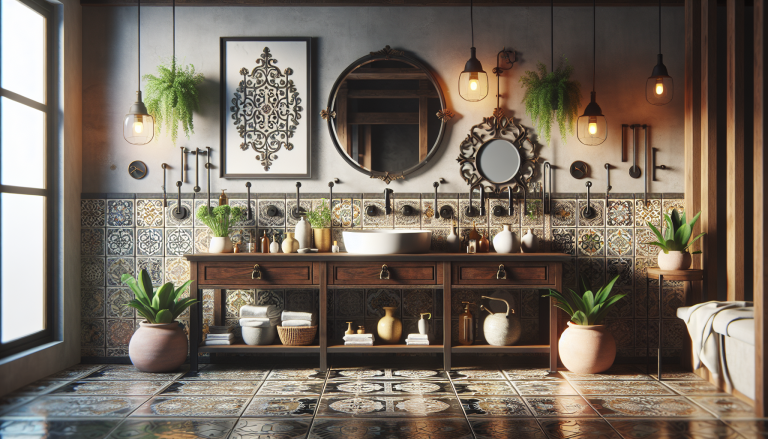Exploring the historical roots and defining features of Spanish textures reveals a tapestry rich in color, technique, and influence on modern design. This article delves into how Spanish-style aesthetics, from the sun-drenched exteriors to the cool, airy interiors, embody the spirit of indoor-outdoor living with a distinctive flair. It provides DIY tips for those eager to incorporate the Spanish style into their homes, reflecting the culture and vibrant Spain colors in every detail.
Historical Roots of Spanish-Style Painting

Spanish Modern Interior Design masterfully blends traditional elements rooted in Spain’s rich cultural heritage with a minimalist approach, emphasizing natural materials, the vibrant colors of Spain, and intricate details. This unique style captures the essence and colors of Spain, showcasing how traditional and contemporary aspects can coexist beautifully. It offers a refreshing perspective on interior design by incorporating organic flair, textures, earthy tones, and light in a way that pays homage to Spain’s history while embracing modern living.
The origins of Spanish-style painting are deeply intertwined with the cultural and historical influences that have shaped Spain over the centuries. This rich heritage is evident in the diverse techniques and styles that have emerged from various periods, each contributing uniquely to what we recognize today as Spanish-style painting.
Ancient Influences and Roman Contributions
Spanish painting’s historical journey begins with the ancient Iberians, whose prehistoric art forms were among Europe’s earliest. The rock art in the Spanish Mediterranean Basin, recognized for its vivid depictions and sophisticated techniques, laid foundational artistic principles that echoed through the ages. The Roman conquest further enriched the Spanish artistic landscape, introducing advanced forms of architecture, sculpture, and mosaics. Notably, the Roman Theatre of Mérida exemplifies the profound Roman impact on regional art forms, integrating classical styles that would resonate in later Spanish artworks.
Medieval to Golden Age Evolutions
Transitioning into the medieval period, Romanesque painting in Spain, especially noted in Catalonia’s church frescoes, marked a smooth evolution from earlier styles, incorporating more narrative depth and vibrant colors. The Gothic period saw further diversification as Spanish artists began integrating French and Italian influences, leading to the creation of numerous revered altarpieces. The Renaissance in Spain, particularly influenced by Netherlandish painting, gave rise to the Hispano-Flemish school, which significantly shaped artistic expressions during this era.
The illustrious Spanish Golden Age heralded a zenith in artistic achievement, characterized by dramatic chiaroscuro and a rich color palette designed to capture human emotion’s depth. This period reflected Spain’s political and cultural climates, mirroring the empire’s grandeur through expressive and emotionally resonant artworks. The subsequent periods, including the introduction of the Bourbon dynasty and the influences of French artistic styles, saw a shift towards Neoclassicism and later, the incorporation of Romantic elements which played a crucial role in expressing national identity during times of social and political upheaval.
These historical layers, from ancient to modern influences, illustrate the complex and rich tapestry of Spanish-style painting, highlighting a unique blend of cultural influences that have continuously evolved to form the vibrant and dynamic character of Spain’s artistic heritage.
Defining Features of Spanish Textures
Spanish-style design is renowned for its vibrant and flavorful aesthetic, which is evident both inside and outside the home. The architectural features often include arched doorways and windows that add a sense of drama and historical depth. Exteriors are typically painted in crisp white, serving as a canvas that highlights the rich textures and colors of the design elements such as the wrought iron lanterns that illuminate the structure’s facade. These elements are not just decorative but functional, enhancing the indoor-outdoor living experience that is central to Spanish design.
Inside, the floors are often adorned with terra-cotta or hand-painted Mexican tiles, adding warmth and character to the rooms. These materials are chosen not only for their aesthetic appeal but also for their practicality in a warm climate. The walls might feature a distinctive Spanish Knife texture or a stucco finish in warm tones, diverging from the traditional white to incorporate colors derived from natural elements like sand and ocean. This choice of materials and textures helps to maintain a cool interior environment while also enriching the home’s visual appeal.
Furnishings in a Spanish-style home blend rustic and elegant elements, creating a unique and eclectic style. Rich textiles such as velvet curtains and Old World-style tapestries complement the earthy tones of the walls and floors, while eclectic furniture pieces from various cultures add a layer of global sophistication. This mix of textures and elements from nature, alongside the strategic use of color and material, encapsulates the essence of Spanish-style design, making it both a tribute to historical influences and a functional choice for modern living.
Innovations in Color and Technique
Innovations in color and technique within Spanish-style homes have significantly enhanced both aesthetic appeal and practical functionality. Here are some key innovations:
- Use of Dark Curtains:
- Spanish-style homes often feature dark red or brown curtains, which are not only stylish but also functional. These curtains are used to block cold winds, helping to keep the home warm in cooler climates while maintaining the interior cool during warmer months.
- Flooring and Walkways:
- The flooring in Spanish-style homes typically comprises dark hardwood, known for its durability and ability to retain sheen over time due to sunlight absorption. Additionally, arcade walkways made of metal and glass contribute to the light and airy feel of the interiors, enhancing the connection with the outdoors.
- Decorative Doors and Tiles:
- Carved wooden doors with intricate iron accents are common, often crafted from alder wood complemented by iron straps, grills, or bars. These elements add a layer of detail and historical charm. Moreover, painted pattern tiles are utilized for both decoration and utility, found in areas like stairs, fireplaces, outdoor patios, and walkways, adding vibrant colors and patterns that reflect the cultural richness of Spain.
Through these elements, Spanish-style homes continue to evolve, embracing both traditional influences and modern needs, thereby creating living spaces that are both functional and visually captivating.
Influence on Modern Design
Spanish Modern Interior Design has profoundly influenced contemporary design by integrating traditional Spanish elements with modern aesthetics. This unique blend is evident in the use of natural materials, earthy colors, and intricate detailing, contrasted with contemporary furniture and decor. Notably, the influence extends beyond residential spaces into commercial and public areas, where the emphasis on organic materials and textures creates welcoming and dynamic environments.
Contemporary brands such as Lladro, Kriskadecor, and PORCELANOSA have drawn inspiration from traditional Spanish design, adapting these elements to suit modern tastes and functionalities. Lladro, for instance, has evolved from creating ceramic figurines to incorporating modern designs that still reflect the rich cultural heritage of Spain. Similarly, Kriskadecor uses anodized aluminum to offer a wide range of color possibilities in their products, demonstrating innovation while maintaining the essence of Spanish aesthetics.
In the realm of architecture, Spanish Revival, also known as Spanish Colonial, continues to be popular in regions with climates similar to Spain, like southern California and Florida. This architectural style is characterized by stucco exteriors, terra-cotta clay-tiled roofs, and arched windows, which not only reflect the historical Spanish influences but also cater to modern needs by providing natural cooling in warm climates. The adaptation of these design elements in modern homes and buildings underscores the enduring influence of Spanish design on contemporary architecture and interior decoration.
DIY Tips for Incorporating Spanish Style
To infuse your home with the vibrant and rustic charm of Spanish style, consider these practical DIY tips that can transform your space with the colors and textures reminiscent of Spain.
Bold Colors and Textures
- Walls and Accents: Start by painting walls in bold colors like terracotta, mustard yellows, or various shades of blue. Complement these with textiles such as rugs, curtains, cushions, and throw pillows to enhance the Spanish aesthetic.
- Textures: Incorporate materials like wrought iron in light fixtures and furniture, along with stucco finishes on walls to add depth and authenticity to your design.
Decorative and Functional Elements
- Tile Work: Install colorful tile backsplashes in your kitchen or bathroom. Opt for designs that feature traditional Spanish patterns to create a focal point in these spaces.
- Iron and Wood: Use wrought iron for elements like railing or light fixtures and add wooden accents through exposed ceiling beams or rustic furniture pieces. These materials not only serve decorative purposes but also add structural integrity and historical charm.
Architectural and Artistic Touches
- Arched Features: If possible, incorporate arched doorways or windows, enhancing them with antique mirrors to expand the feel of your space visually.
- Spanish Art and Pottery: Display Spanish-inspired art and pottery to add artistic flair and cultural depth to your interior decor.
By integrating these elements, you can create a living space that not only pays homage to the traditional Spanish style but also provides a warm and inviting atmosphere for modern living.
Conclusion
Through the exploration of Spain’s rich artistic heritage and the vibrant aesthetics of Spanish-style textures, this article has illuminated how the historical and cultural influences of Spain continue to shape modern design, blending traditional elements with contemporary living needs. The distinctive features of Spanish design, from the sun-drenched exteriors to the intricate detailings found within the interior spaces, celebrate the essence of Spanish culture while providing practical solutions for today’s lifestyle. This seamless integration of the old and the new underscores the dynamic and enduring appeal of Spanish-style interior design, making it a source of inspiration for those looking to infuse their homes with warmth, color, and a touch of historical elegance.
As we reflect on the influence of Spanish architecture and design across time, it’s clear that the appeal of these elements transcends trends, offering timeless inspiration for creating inviting and sophisticated spaces. The insights shared on integrating Spanish style into modern homes extend an invitation to embrace the rich palette of Spanish textures and colors, encouraging a deeper appreciation for the cultural legacy that grounds this design ethos. By adopting these design principles, individuals can cultivate spaces that not only draw from Spain’s historical canvas but also resonate with contemporary aesthetics, bridging the gap between past and present in the art of interior decoration.

